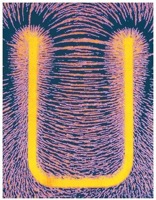Difference between revisions of "Magnetism"
m (Text replacement - "http://nordan.daynal.org" to "https://nordan.daynal.org") |
m (Text replacement - "http://" to "https://") |
||
| Line 1: | Line 1: | ||
[[File:lighterstill.jpg]][[File:Magnetism.jpg|right|frame]] | [[File:lighterstill.jpg]][[File:Magnetism.jpg|right|frame]] | ||
| − | *Date: [ | + | *Date: [https://www.wikipedia.org/wiki/17th_Century 1616] |
==Definitions== | ==Definitions== | ||
| − | *1 a : a class of [[physical]] [[phenomena]] that include the [[attraction]] for iron observed in lodestone and a magnet, are inseparably [[associated]] with moving [ | + | *1 a : a class of [[physical]] [[phenomena]] that include the [[attraction]] for iron observed in lodestone and a magnet, are inseparably [[associated]] with moving [https://www.wikipedia.org/wiki/Electricity electricity], are exhibited by both magnets and electric currents, and are characterized by fields of [[force]] |
:b : a [[science]] that deals with magnetic [[phenomena]] | :b : a [[science]] that deals with magnetic [[phenomena]] | ||
*2 : an ability to [[attract]] or [[charm]] | *2 : an ability to [[attract]] or [[charm]] | ||
| Line 9: | Line 9: | ||
==Description== | ==Description== | ||
| − | The term '''magnetism''' is used to describe how [[materials]] [[respond]] on the microscopic level to an applied [ | + | The term '''magnetism''' is used to describe how [[materials]] [[respond]] on the microscopic level to an applied [https://en.wikipedia.org/wiki/Magnetic_field magnetic field]; to categorize the magnetic [[phase]] of a material. For example, the most well known form of magnetism is [https://en.wikipedia.org/wiki/Ferromagnetism ferromagnetism] such that some ferromagnetic [[materials]] produce their own persistent magnetic field. However, all materials are [[influenced]] to greater or lesser [[degree]] by the [[presence]] of a magnetic field. Some are attracted to a magnetic field ([https://en.wikipedia.org/wiki/Paramagnetism paramagnetism]); others are repulsed by a magnetic field ([https://en.wikipedia.org/wiki/Diamagnetism diamagnetism]); others have a much more [[complex]] [[relationship]] with an applied magnetic field. Substances that are negligibly affected by magnetic fields are known as non-magnetic substances. They include copper, aluminium, water, gases, and plastic. |
| − | The magnetic state (or phase) of a [[material]] depends on temperature (and other variables such as pressure and applied magnetic field) so that a material may exhibit more than one form of magnetism depending on its temperature, etc.[ | + | The magnetic state (or phase) of a [[material]] depends on temperature (and other variables such as pressure and applied magnetic field) so that a material may exhibit more than one form of magnetism depending on its temperature, etc.[https://en.wikipedia.org/wiki/Magnetism] |
[[Category: Physics]] | [[Category: Physics]] | ||
Latest revision as of 01:22, 13 December 2020
- Date: 1616
Definitions
- 1 a : a class of physical phenomena that include the attraction for iron observed in lodestone and a magnet, are inseparably associated with moving electricity, are exhibited by both magnets and electric currents, and are characterized by fields of force
Description
The term magnetism is used to describe how materials respond on the microscopic level to an applied magnetic field; to categorize the magnetic phase of a material. For example, the most well known form of magnetism is ferromagnetism such that some ferromagnetic materials produce their own persistent magnetic field. However, all materials are influenced to greater or lesser degree by the presence of a magnetic field. Some are attracted to a magnetic field (paramagnetism); others are repulsed by a magnetic field (diamagnetism); others have a much more complex relationship with an applied magnetic field. Substances that are negligibly affected by magnetic fields are known as non-magnetic substances. They include copper, aluminium, water, gases, and plastic.
The magnetic state (or phase) of a material depends on temperature (and other variables such as pressure and applied magnetic field) so that a material may exhibit more than one form of magnetism depending on its temperature, etc.[1]
